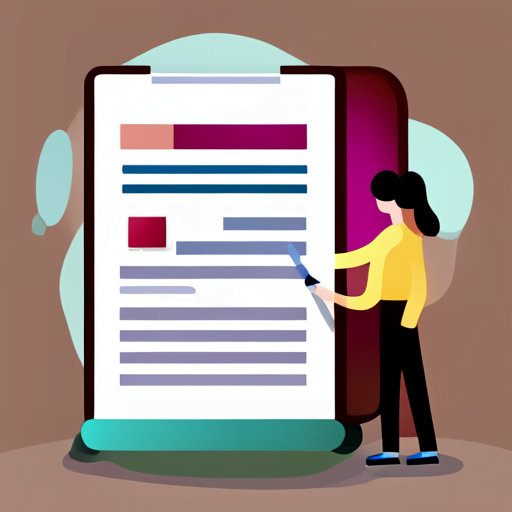Are you struggling to keep up with the academic journals in your field? Do you feel overwhelmed by the amount of information they contain? Fear not, as you can learn how to effectively read and understand academic journals with a few simple tips and strategies.
By mastering these techniques, you can stay up-to-date with the latest research and gain a deeper understanding of your area of study.
In this article, you will learn about the purpose and structure of academic journals, and why it is important to read abstracts and introductions. You will also discover how to skim and scan articles efficiently, take effective notes, and enhance your understanding through active reading techniques.
With these tools at your disposal, you can improve your comprehension of academic journals and become a more knowledgeable and informed professional in your field.
So, let’s get started!
Table of Contents
Understanding the Purpose and Structure of Academic Journals

If you’re feeling lost navigating the world of scholarly research, take a moment to explore the purpose and structure of these publications – it might just be the key to unlocking a wealth of knowledge.
Academic journals are typically published by universities or academic societies and serve as a platform for researchers to share their findings with the wider academic community. These publications are often peer-reviewed, which means that other experts in the same field review the research to ensure its accuracy and validity.
Understanding the structure of academic journals is also crucial in effectively reading and comprehending the content. Most journals follow a similar format, with sections such as an abstract, introduction, methodology, results, and conclusion.
The abstract provides a brief summary of the research, while the introduction provides background information about the research topic. The methodology section explains how the research was conducted, while the results section presents the findings. Finally, the conclusion summarizes the research and its implications.
By understanding this structure, you can quickly locate the information you need and gain a better understanding of the research presented in the journal.
The Importance of Reading Abstracts and Introductions

Don’t skip over the abstracts and introductions – they hold the key to unlocking the valuable insights that lie within academic articles.
Abstracts are brief summaries of the entire article, giving you a general idea of what the article is about.
Introductions, on the other hand, provide more detailed information about the background and rationale of the research, as well as the objectives and research questions. They also highlight the significance of the study and the methodology used.
By reading the abstract and introduction, you can quickly determine if the article is relevant to your research topic and decide whether to read further.
In addition, reading abstracts and introductions can help you identify the main argument or thesis of the article. This can guide you in understanding the author’s perspective and how the article fits into the larger academic discourse.
It can also help you identify any gaps in the research that the article seeks to address. Therefore, by taking the time to read the abstract and introduction, you can gain a deeper understanding of the article and be better equipped to critically evaluate its content.
Tips for Skimming and Scanning Articles

Hey, wanna learn some tips for quickly getting through academic articles without losing your mind? Let’s talk about how to skim and scan like a pro!
When you first receive an article, start by reading the title and abstract to get an idea of what the article’s about. This will help you determine if the article’s relevant to your research or if you should move on to another article.
Next, focus on the headings and subheadings throughout the article. These will give you an idea of the main points and arguments being made. Skim through the paragraphs for key terms and phrases that relate to your research. If you come across a section that seems particularly relevant, slow down and read it more thoroughly.
Remember, you don’t need to read every word in the article, just the parts that are most important to your research. By using these tips, you can effectively skim and scan an academic article and quickly determine its relevance to your research.
In conclusion, skimming and scanning academic articles can seem overwhelming at first, but with these tips, you can quickly get through articles without losing your mind. Remember to start with the title and abstract, focus on the headings and subheadings, and skim for key terms and phrases. By using these techniques, you can save time and find the most important information for your research.
Effective Note-Taking Strategies

Let’s explore some great note-taking strategies that can help you stay organized and engaged while reading scholarly articles. First, it’s important to remember that note-taking should be an active process, not just mindlessly copying down information.
One effective strategy is to create a concept map or mind map, visually organizing the main ideas and supporting details of the article. This can help you see the connections between different concepts and better understand the overall structure of the article.
Another helpful strategy is to use abbreviations and symbols to save time and space while taking notes. For example, using arrows to indicate cause and effect relationships, or using asterisks to mark important points.
Additionally, creating a summary or abstract of the article in your own words can help solidify your understanding and make it easier to remember key points later on.
By using these strategies, you can take more efficient and effective notes while reading academic journals.
Enhancing Your Understanding Through Active Reading Techniques

By actively engaging in the reading process and utilizing techniques such as highlighting, questioning, and summarizing, you can deepen your knowledge and truly absorb the valuable information presented in scholarly articles.
Highlighting important points, quotes, and definitions can help you quickly identify and review key information. Questioning the text and making connections to your own experiences can help you better understand the concepts being presented. Summarizing the main points and arguments in your own words can help solidify your understanding and retention of the material.
Active reading also involves critically evaluating the author’s arguments and evidence. As you read, consider the author’s perspective, biases, and assumptions. Are their arguments well-supported? Are there any gaps in their reasoning or evidence?
Engaging with the text in this way can help you develop a more nuanced understanding of the topic and form your own informed opinions. By actively reading and engaging with scholarly articles, you can not only deepen your understanding of the material but also improve your analytical and critical thinking skills.
Conclusion
Remember to always read the abstracts and introductions as they provide a summary of the article’s main points. Additionally, skimming and scanning techniques can help you identify the most relevant parts of an article quickly.
Don’t forget to take effective notes to keep track of the important information you come across. Finally, active reading techniques such as asking questions and making connections can help you enhance your understanding of the material.
With these skills, you’ll be able to read and understand academic journals with ease. Keep practicing and applying these techniques to improve your reading comprehension and knowledge in your field of study. Good luck!
